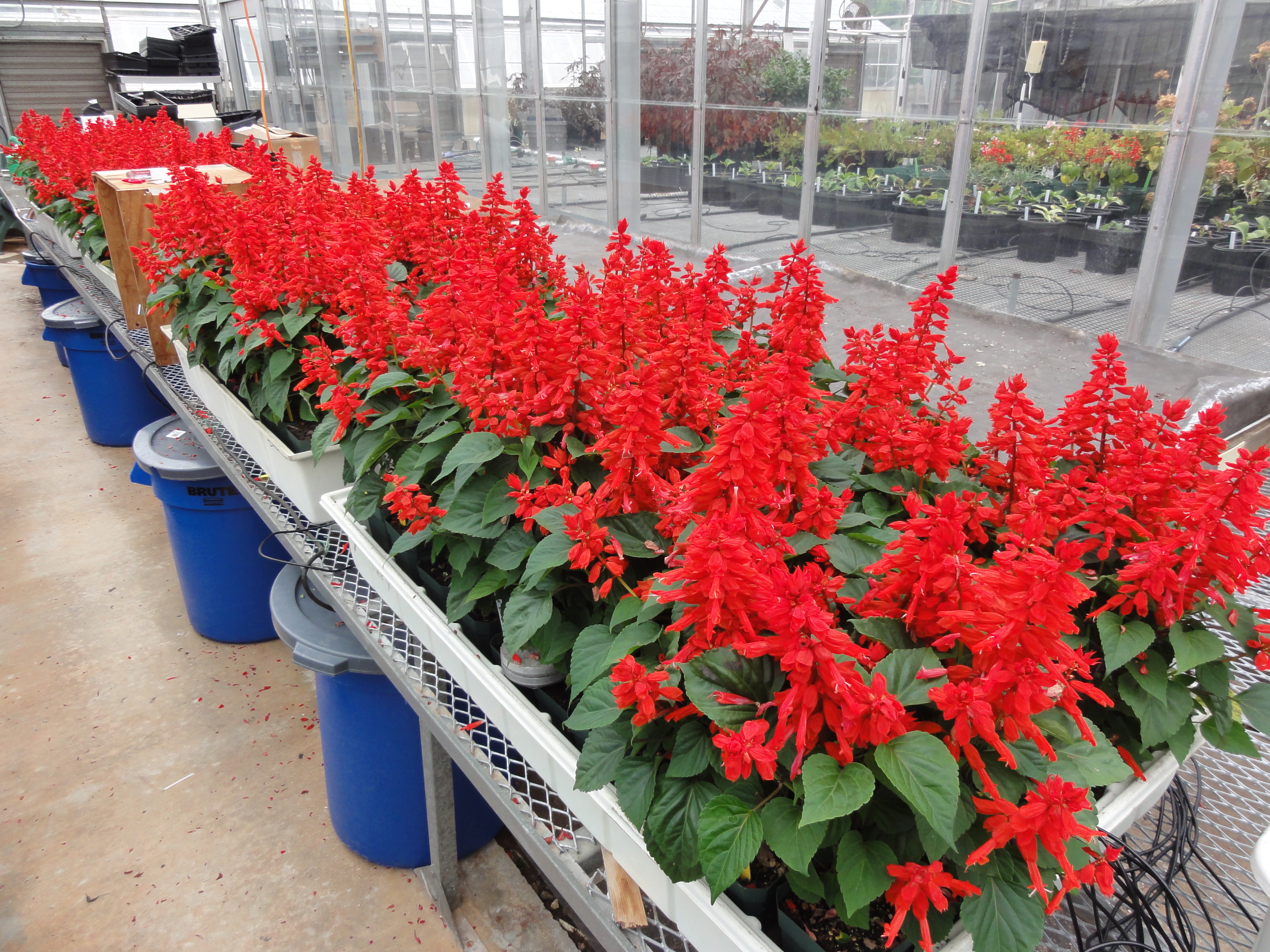
Plant growth response of subirrigated salvia ‘Vista Red’ to increasing water heights at two substrates
Resumo
Subirrigation applies water and nutrients to the bottom of pots without wetting leaves, improving water use and reducing disease spread compared to overhead irrigation systems. However, water levels applied within the benches are often higher than required to promote capillary action, applying more water than needed and wasting pumping energy. The objective was to evaluate the effect of different water levels in plant growth of subirrigated salvia (Salvia splendens) ‘Vista Red’ in two substrates. Five water levels (0.75, 1.5, 3.0, 4.5, and 6.0 cm) and two substrates (pine bark: sphagnum peat moss and peat: perlite [both 75%: 25% v/v]) were tested, with four replications. Substrate moisture was monitored by capacitance-type sensors connected to a multiplexer and data logger. Volumetric water content (VWC) was higher in peat: perlite (0.34 to 0.75 m3 m-3) than pine bark: sphagnum peat moss (0.21 to 0.60 m3 m-3) at all water levels. Higher water levels increased VWC in both substrates. The leaf chlorophyll index was 4% lower at the 6.0 cm compared to the other treatments in peat: perlite (p<0.0001). Stomatal conductance decreased overtime; but increased with the increase in water levels in peat: perlite (p<0.0001). Different water levels had no effect on leaf area, net photosynthesis, number of branches and leaves, and shoot dry weight (p>0.05), an indicative that the different water levels does not affect the plant growth. However, shoot plant height increased 13% in pine bark: sphagnum peat moss (p=0.0096) and 17% in peat: perlite (p=0.0335) as water levels increased. Water levels from 1.5 cm can be recommended for pine bark: sphagnum peat moss or peat: perlite in subirrigation, applying water according to plant needs, optimizing plant growth and reducing the nutrient solution pumping costs compared to systems that apply higher water levels.
DOI: https://doi.org/10.1590/hb.v34i2.729
Apontamentos
- Não há apontamentos.